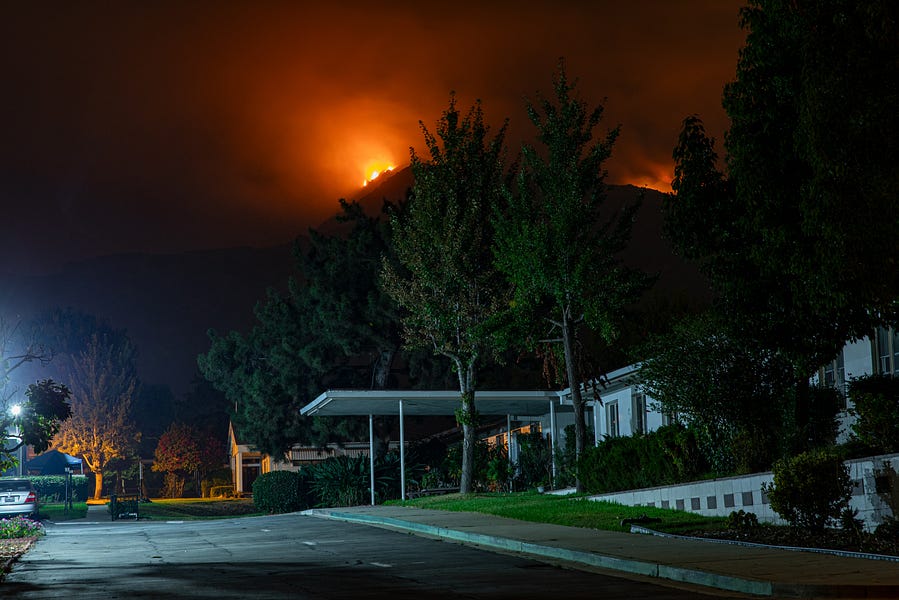
Photo by Nikolay Maslov on Unsplash

When I interviewed former Time Magazine science editor Charles Alexander about climate change last August, I noted that 2018 had seen the “deadliest and most destructive wildfire season on record in California.”
Then things got even worse.
In 2020, there were almost 10 million “fire incidents” in California. Within a few months, the state experienced 5 of its worst 6 fires since records began in 1932. As more than 4.2 million acres burned, California saw more destruction in 2020 than from the previous three years combined.
Things were similarly bad in Colorado, which saw a record number of wildfires, including the worst three in that state’s history.
In Oregon, approximately one million acres burned, nearly double the 10-year average. And Idaho, Wyoming and Utah also saw major wildfires.
2021 could be even more extreme
The wildfire season in California begins in May and now extends into December. This year, the state is already preparing for the worst.
As the Sacramento Bee reports, Governor Newsom has just signed a bill allocating more than half a billion dollars to wildfire prevention:
Under the legislation, the state will spend $536 million on preventing fires through forest and vegetation management, clearing fuel around rural homes and retrofitting buildings in high-risk areas to help them survive fires.
Despite bipartisan support of the measures, “some voiced concern that it does not go far enough to manage forests and clear dry and dead vegetation that fuels fires,” and Newsom stopped short of declaring a drought emergency, as lawmakers in the Central Valley had requested.
Climate change is, of course, a factor. So far, 2020-21 is the second-driest 2-year period ever recorded in California. And average temperatures in California continue to trend up. But downed power lines, human activity—both accidental and intentional—plus the Santa Ana Winds, also contribute to California’s vulnerability.
“Irreversible consequenses” for children
In addition to the death and destruction caused by wildfires—in 2020, 33 people died in California and 10,488 structures were damaged or destroyed—the smoke wildfires produce can cause serious health effects, especially for children, especially in California’s Central Valley.
As the New York Times reported last November:
Fresno and its neighboring counties in the Central Valley rank first in the country for particulate matter pollution, according to the American Lung Association. Its childhood asthma rates are far higher than the statewide average.
As the Times notes, Fresno, one of the places where kids are most at risk, is 55% Latino and 18% live below the poverty line, compared to San Francisco, which is largely white and Asian, with only 10% living in poverty.
The Times spoke to Dr. Kari Nadeau, a professor of medicine at Stanford who specializes in pediatric allergies and asthma. Her research suggests that exposure to wildfire smoke may create permanent genetic changes in children’s immune cells. “It could,” she said, “have irreversible consequences.”
Despite the fact that 4.5 million Californians voted for Trump in 2016, he was as useless to them as he was to the rest of the country in the face of disaster. As former Trump administration official Miles Taylor told us in 2020, Trump was so “rageful” against California for not supporting him that, “he told us to stop giving money to people whose houses had burned down in a wildfire.”
Even beyond Trump’s vindictiveness against “Blue States,” his time in office was deadly for the planet. He didn’t just waste four years that could have been spent on climate action—he actually set America and the planet back with decisions and policies specifically designed to destroy public lands, poison our waters, reward corporate polluters, and accelerate climate change.
President Biden’s Earth Day Summit this week offers a chance for America to start rebuilding its “climate credibility” on the world stage. And here at home, there’s hope for the future thanks to Biden’s clear commitment to creating a modern, sustainable infrastructure and raising millions of Americans out of poverty, too.
But the drought in California is already baked into the reality of 2021. And, as the San Jose State University Fire Weather Lab tweeted last week, with the region’s fuel-moisture content (FMC) at a record low, the prospects for this year’s wildfire season are “looking grim.”
Thanks for reading and sharing! If you haven’t already subscribed, please do. And thanks.
Subscribe to Unprecedented
Subscribe to the newsletter and unlock access to member-only content.